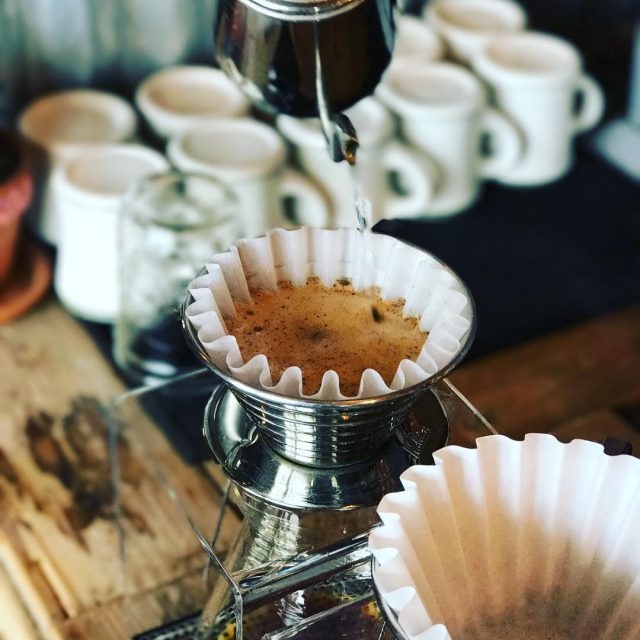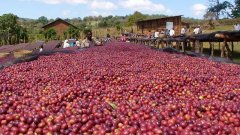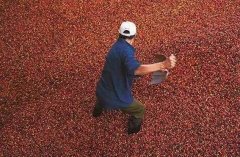Origins of Hartman Manor and Hope Manor Legends History Success Secrets
Hope Manor is located at an altitude of 1400-1600 meters and yields between 300-700 bags. Processing is mostly done on farms, washing, sun-drying, and the use of the treated hulls, pulp, and mucosa as fertilizer. The estate grows 60% katula, 20% katua and 20% tin card and other varieties, most notably rose summer seeds, and won the Best OF Panama in 2008. They also planted many native trees as shade trees and nutrients for the soil, including orange trees and many tropical fruits such as lemons and grapefruits. There is a huge tropical rainforest nature reserve in the estate, and there are at least three different mountain wells with rich rainfall. The annual average rainfall is 3200 mm, and the weather temperature ranges from 16-23 degrees during the day and 14-20 degrees at night.
Hope Manor was different from other manors. It had a PhD botanist, three professional cup surveyors, and 100 full-time employees. Currently, it managed the manors under its jurisdiction. The estate is owned by the Herrera brothers. In fact, the Herrera brothers 'grandfather ran a coffee farm in Trujillo, Colombia. Later, the brothers gradually declined and left Colombia. But they haven't given up on their dream of returning home to run a coffee plantation.
The first estate Herrera bought back home was La Esperanza in Trujillo, very close to their grandfather's original farm, which now serves as regional headquarters. The estate itself is 100% organic, with coffee trees of different varieties including Colombia, Castillo, Caturra and more than 14000 organic roses. Herrera then bought four estates in Trujillo and Caicedonia, north of Trujillo. Together with La Cardeida Estate in Boquete, Panama, leased in 2005, it now has six estates with a total coffee cultivation area of 213 hectares.
Their estates are located in eight unique microclimates in the Tri-Constellation Mountains of Colombia, giving their botanists the perfect opportunity to experiment with different microclimates and soil flavors, different treatments, and different coffee varieties, combining the rationality of scientists, the smell of merchants, and the persistence of coffee quality. For example, they create different processing procedures and specifications for different microclimates and varieties. There are 95 data points to manage all the data, from seedling development to export.
Chief botanist Hernando Tapasco's team set up weather stations on the estate to track weather data and assist in harvest decisions. Data on the farm is collected continuously and analyzed weekly. After harvest, they compare weather data, production data, and cup data to analyze correlations. Summer harvesters are strictly trained to harvest only ripe cherries and are paid by the day, unlike other estates, which are paid by weight. In order to avoid workers in order to rush performance, unqualified cherries are also harvested, half of the harvest workers have more than six years of experience. After the fruit is harvested, it is sent to the central processing plant in Hope Manor. Each batch of roses will be marked and processed separately. After drying in the sun for three days, it was moved to the tower to dry. Strict quality control is another key factor. Cerro Azul has 40,000 to 45,000 rosewood trees, of which only 5- 7,000 produce rosewood beans that can bear the Cerro Azul brand.
Esperanza's experiments and innovations in varieties seem endless, constantly experimenting with new varieties, in addition to the organic Kadura, which originally occupied most of the area in Esperanza, from Rose Summer, Organic Rose Summer, Mocha, Bourbon (including red, yellow and Tekizik bourbon), Pointe Bourbon, Pacamara, San Bernardo and Pache, they really bring the winery's attitude towards grape varieties into coffee. After the summer rose, pacamara, bourbon and even pointy bourbon from Hope Manor continued to create surprises and admiration in the fine coffee world.
Their efforts have finally paid off. As early as 2008, La Cardeida, rented by Hope Manor, won the Best Panama championship with a score of 93.16. The Triple Crown of Coffee of the Year for 2012 was won by three estates that currently grow mainly summer roses: Cerro Azul second, Las Magarita third and Buenos Aires Experimental Estate seventh.
Hartman's story, like his coffee, is legendary. Hartman Manor is located in Zelich, Santa Clara. The founder was Mr. Alois St. Hartmann (Luis Hartmann). He was born on June 20, 1891, in the Moravila region of Hungary, Austria, in what is now the Czech Republic; he died on May 25, 1970, aged 78.
As a young boy, he was abandoned at the start of World War I. Thanks to his mother, he survived by hiding on a ship bound for Pennsylvania. Both of his brothers died in the war after joining the army. Luis Hartmann traveled a number of countries with his friends until he arrived in Panama in 1911 and settled in Chiriqui province in 1912, mainly in the Candela region. He built the first cabin in the virgin forest.
Hartman Manor is a family business founded in 1940 by Latip Hartman (son of Louis). In 1966, Lattie married Denora Sandy of Costa Rica. They had five sons, little latitte, alan, alexander, alice and kelly. Each member of the family is responsible for the growing, harvesting and estate visits. A family estate that has grown coffee for more than 100 years is a legend in itself.
The family-owned business has a state-level cup-testing laboratory and sample baking room. Carefully cup each batch of coffee fruit. This ensures that Hartman Manor coffee quality is stable and always seeking improvement. Their scientific approach to coffee and nearly 100 years of family experience guarantee their excellent production.

Important Notice :
前街咖啡 FrontStreet Coffee has moved to new addredd:
FrontStreet Coffee Address: 315,Donghua East Road,GuangZhou
Tel:020 38364473
- Prev

Introduction and description of roasting flavor and taste environment of coffee beans in Minas Joan Manor, Brazil
Brazil is the largest coffee producer in the world, accounting for about 33% of coffee production, but because Brazil is located in tropical rain forest areas with relatively flat terrain and few high-altitude mountain forests, most coffee is grown in low-altitude non-volcanic soil areas. And there is not much shade for shading, resulting in the disadvantage that Brazilian beans grow too fast, but the shape of beans is very large, but the density and soft flavor of coffee does not change much.
- Next

Introduction to the output of Coffee trees in Carmen Manor, Panama
Carmen Manor Coffee is a coffee estate dominated by the family. The family has long grown coffee under the principle of providing high-quality coffee and protecting the environment. Efrain and Carmen Franceschi began to cultivate Arabica coffee varieties on their estate in 1950. Today, Carmen Manor's single treatment plant produces about 1200 bags (60 kg each) of unique high-quality coffee per year.
Related
- Does Rose Summer choose Blue, Green or Red? Detailed explanation of Rose Summer Coffee plots and Classification in Panamanian Jade Manor
- What is the difference between the origin, producing area, processing plant, cooperative and manor of coffee beans?
- How fine does the espresso powder fit? how to grind the espresso?
- Sca coffee roasting degree color card coffee roasting degree 8 roasting color values what do you mean?
- The practice of lattes: how to make lattes at home
- Introduction to Indonesian Fine Coffee beans-- Java Coffee producing area of Indonesian Arabica Coffee
- How much will the flavor of light and medium roasted rose summer be expressed? What baking level is rose summer suitable for?
- Introduction to the characteristics of washing, sun-drying or wet-planing coffee commonly used in Mantenin, Indonesia
- Price characteristics of Arabica Coffee Bean Starbucks introduction to Manning Coffee Bean Taste producing area Variety Manor
- What is the authentic Yega flavor? What are the flavor characteristics of the really excellent Yejasuffi coffee beans?

